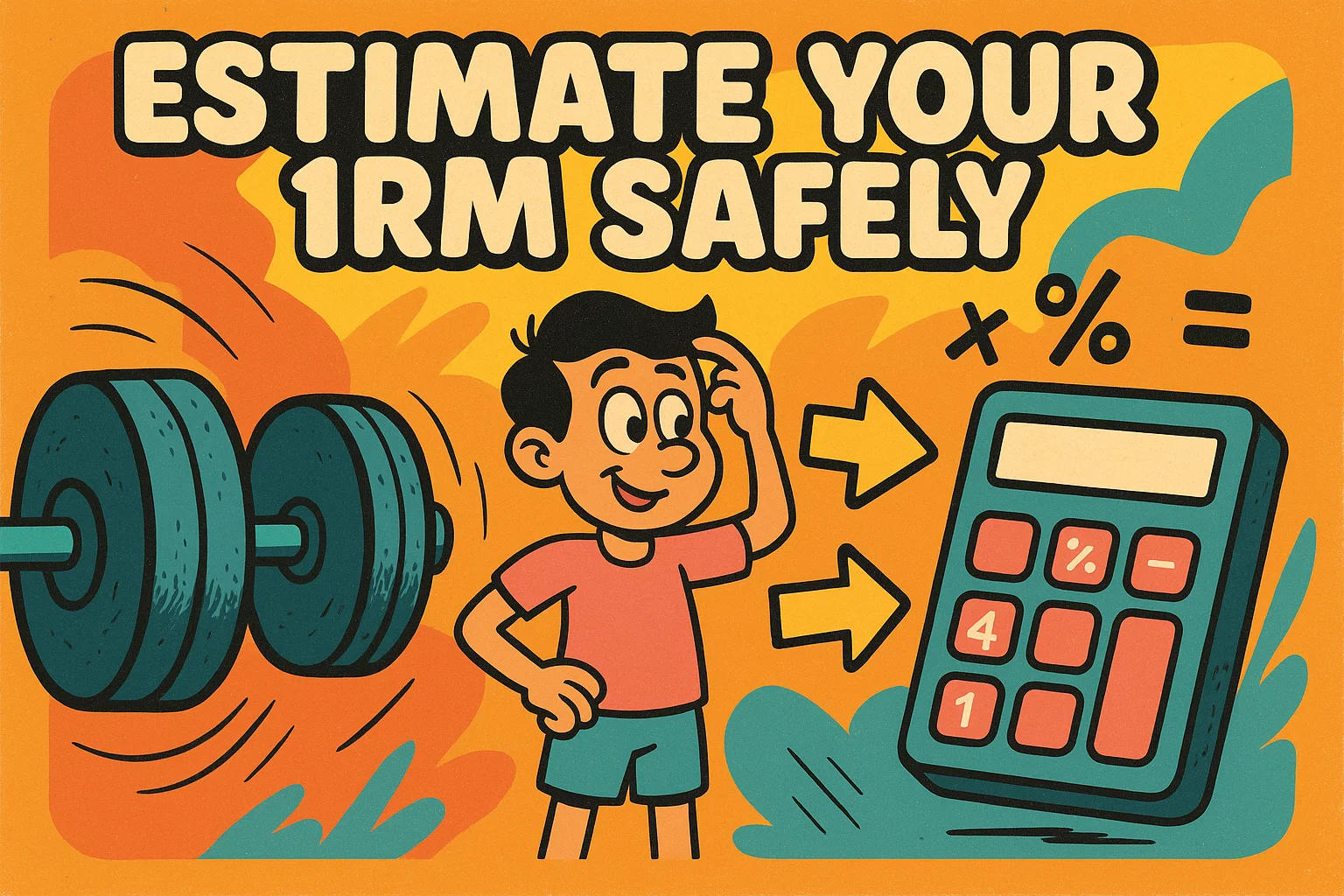Knowing your One Rep Max (1RM) isn’t just for elite powerlifters—it’s a cornerstone of intelligent training. Whether you're building muscle, improving endurance, or avoiding plateaus, understanding your 1RM helps you tailor every workout with precision. Let’s explore what it means, how it’s measured, and how athletes—from gym newbies to Olympians—use it to progress safely and effectively.
Check out our Sports page to explore helpful calculators and guides for athletes and fans alike.
What is One Rep Max (1RM)?
One Rep Max (1RM) refers to the maximum amount of weight a person can lift for a single, complete repetition of a specific exercise. It’s most commonly associated with compound movements like the bench press, squat, and deadlift, where full-body coordination and strength come into play. The concept has long been used in sports science and strength training to gauge an athlete’s absolute strength—the raw force they can exert in one explosive effort.
Unlike muscular endurance, which focuses on how many reps you can perform with lighter weight, 1RM is about peak performance. It represents the outer limit of your strength capacity for a single lift. Interestingly, your 1RM can vary depending on the exercise—most people can lift more in a deadlift than a bench press, due to differences in muscle group engagement and biomechanics.
Strength coaches and exercise physiologists use 1RM data to prescribe training loads tailored to individual goals—whether it's building muscle, improving power, or recovering from injury. It’s a cornerstone of evidence-based programming and a powerful metric for tracking progress over time.

Common Estimate 1RM Formulas
Several formulas have been developed to estimate your 1RM based on how much weight you can lift and how many repetitions you can perform. Here are some of the most popular estimation formulas:
Epley Formula
The Epley formula is one of the most commonly used methods for estimating 1RM. It’s simple and effective for most exercises. The formula is:
1RM = Weight Lifted × (1 + 30 × No. of Repetitions)
For example, if you lift 100 kg for 5 repetitions, the estimated 1RM would be:
1RM = 100 × (1 + 30 × 5) = 100 × 151 = 151 kg
Brzycki Formula
The Brzycki formula is another widely used 1RM estimation method. It takes into account the number of repetitions you perform with a given weight:
1RM = Weight Lifted × (3637 − No. of Repetitions)
For example, if you lift 100 kg for 5 repetitions, the estimated 1RM would be:
1RM = 100 × (3637 − 5) = 100 × 3632 = 112.5kg
Lombardi Formula
The Lombardi formula is slightly more complex and incorporates an exponent:
1RM = Weight Lifted × (No. of Repetitions 0.10)
For example, if you lift 100 kg for 5 repetitions:
1RM = 100 × (50.10) = 100 × 1.123 = 112.3kg
How to Safely Estimate Your 1RM
Trying to find your One Rep Max (1RM) doesn’t have to mean loading up the bar and risking injury. While some experienced lifters do test their actual max under close supervision, most people—especially beginners—are better off estimating it. The good news? You can get a pretty accurate number without ever lifting your absolute heaviest.
One of the most common methods is using a rep-based formula like the Epley or Brzycki equation. Instead of maxing out, you lift a weight you can handle for 5 to 10 reps, then plug those numbers into the formula to get your estimated 1RM. It’s simple, effective, and a whole lot safer.
Once you know your estimated 1RM, you can build smarter workouts. For example, if your goal is muscle growth, you might train at around 75% of your 1RM. Tools like a Weight Converter can help you switch between pounds and kilograms if your gym uses both. And if you're tracking progress over time, pairing this with a Body Fat Calculator or Calories Burned Calculator gives you a fuller picture of how your strength and overall fitness are improving.
💬 "I stopped testing my max the hard way. Now I just use a rep calculator, and it’s helped me stay injury-free while still getting stronger." – Lauren B., fitness enthusiast
It’s all about training smart—not just hard.

1RM and Different Training Goals
Your One Rep Max (1RM) isn't just a bragging right—it's a tool for programming your workouts with purpose. Depending on your goal, different percentages of your 1RM can be used to target strength, muscle growth, or endurance. Here's a breakdown of how that works, based on research and strength training guidelines from NSCA and studies published on NIH.gov.
|
Training Focus |
Typical Cue or Goal |
% of 1RM |
Target Reps/Set |
|
Max Strength |
"Lift heavy for fewer reps" |
85–95% |
2–6 reps |
|
Explosive Power |
"Move weight fast with force" |
80–90% (Olympic lifts) |
1–3 reps (often lower volume) |
|
Hypertrophy (Muscle Growth) |
"Time under tension, build size" |
65–80% |
6–12 reps |
|
Muscular Endurance |
"Train to resist fatigue" |
50–65% |
12–20+ reps |
|
Rehabilitation / General Fitness |
"Recover safely, maintain strength" |
40–60% |
15+ reps (lower intensity) |
Sources: National Library of Medicine (NIH). Progressive Resistance Exercise Guidelines
🔎 Do you know: Olympic weightlifters often train at just 75–85% of their 1RM most of the year—saving the 100% efforts for competition platforms.
By adjusting your training intensity based on your 1RM, you can work smarter toward your specific goals—whether that’s lifting more, building size, or just staying healthy and functional. This approach is also key in periodization, where athletes shift training focus throughout the year for balanced progression.
Limitations of 1RM
While knowing your One Rep Max (1RM) is incredibly useful, it's not a magic number—and it's definitely not perfect. A few common misunderstandings can lead to confusion or even injury if you’re not careful.
-
Ego lifting can backfire: Chasing a bigger number just to prove something often leads to poor form or injury. Your 1RM should guide your training—not feed your pride.
-
Fatigue skews results: If you're testing your 1RM when you're tired, sore, or under-recovered, it won’t reflect your true strength. Rest and timing matter.
-
Form breakdown at high loads: The closer you get to your max, the more likely your technique will slip—especially if you’re not experienced. And when form suffers, so does safety.
-
It’s not a daily fixed number: Your 1RM can fluctuate depending on sleep, stress, nutrition, and even hydration. A lower 1RM one day doesn’t mean you’ve lost progress.
-
Not always ideal for beginners: Beginners often lack the control or awareness needed to perform true max lifts safely. Estimating your 1RM using submax reps is usually the better option.
And finally, remember that your 1RM isn’t set in stone. It can change day to day based on stress, recovery, nutrition, and even hydration. Treat it as a helpful guideline—not an unchangeable benchmark.

